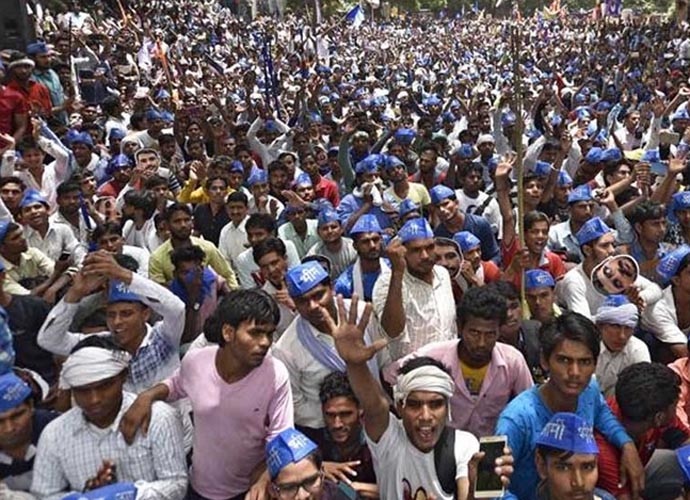NGT ban on dharnas at Jantar Mantar forgets protests must be heard far and wide

The National Green Tribunal has passed an order which bans protests at Jantar Mantar because agitations at the site create noise pollution. In its enthusiasm to cut out the noise, the tribunal has sought "immediate eviction of protesters" from the area.
These protesters, who gather at the site from far-flung cities and the remotest villages - whose names Delhi is obviously oblivious to - will now be pushed 3km away to Ramlila Maidan. And when the noise stops, we can all have a good night's sleep assuming India's myriad problems have been resolved. Brushing things under the carpet is at times the best remedy to deal with intractable complexities or complexities that do not concern us (at least not directly).
In finding a quick-fix solution to our urban problems of loud noises and crammed roads, we have chosen to silence cries for tackling the other big issues begging our attention or the attention of those who make it to Parliament, in whose vicinity Jantar Mantar stands.
As people denied pensions for months, farmers demanding a just price for their produce, women denied their right to dignity or Army veterans demanding one-rank-one-pension over the years chose the site to tell the powers what they want from them, Jantar Mantar metaphorically transformed itself into a constant reminder that democracy, though diluted, is alive.
Moving protests to corners where they do not disturb us is a disturbing development. But it has a precedent. Jantar Mantar was declared as the official site to hold protests by the government in 1993. This, of course, didn't happen because the government was interested in listening to grievances, many of which are its gift to the people it chooses to govern.

Prior to 1993, Rajpath had been the ground for mass mobilisations. People could walk across the road bordering the presidential palace and ministers hoping, if nothing else, they'll at least be heard. What really shook those in power was a 1988 agitation by the Bharatiya Kisan Sangh. In a siege-like situation, protesters and the cattle they brought along filled the streets.
To free Rajpath of the protesters, Jantar Mantar was the chosen alternative. Years later, we are pushing the protests further.
The tribunal's contention is that protesters block roads and cause traffic jams. Our roads it seems are only for our diesel and petrol guzzling vehicles. Not to forget the endless and needless honking that also contributes to noise pollution.
Sadly, it is not the tribunal's mandate to answer who pays heed to protests that do not cause disruptions or that are not loud enough to be heard far and wide or who Delhi belongs to.
We can't lose the irony in the fact that Delhi is the capital of the world's largest democracy without any formal protest squares or plazas. It has chosen to push its protest farther and farther away from where it cannot be heard clearly and coherently is not good policy.
It is pertinent to recall John F Kennedy's lines here. Those who make peaceful revolution impossible will make violent revolution inevitable.

